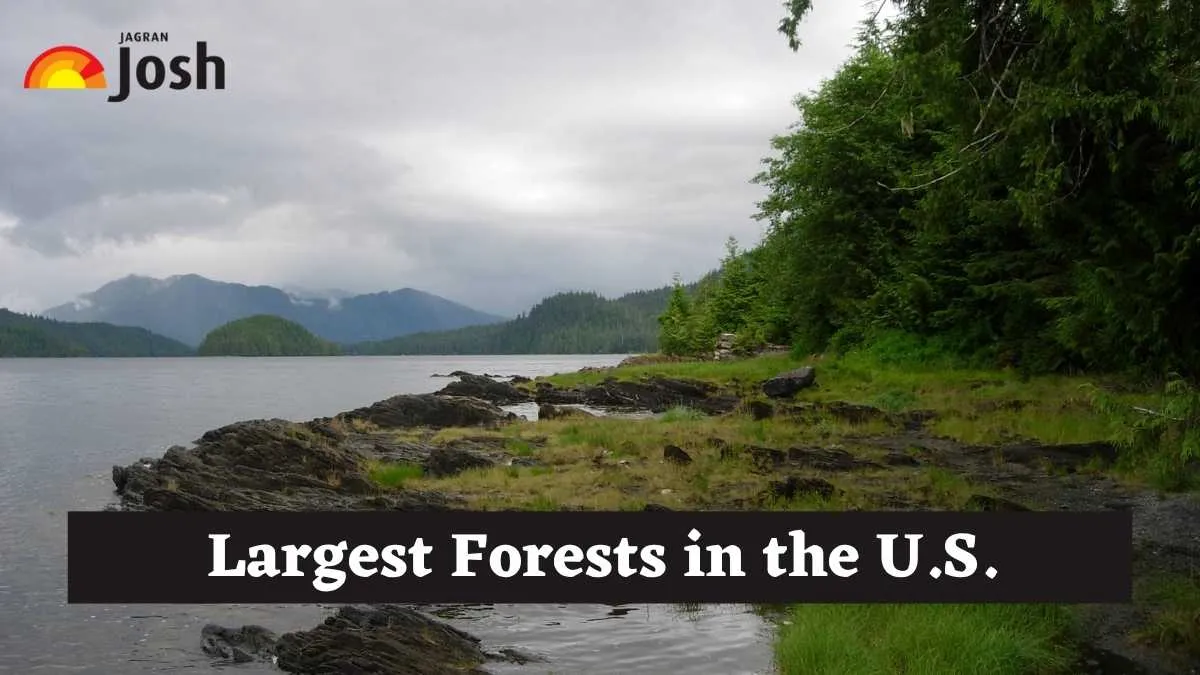The vast national forests of America are truly magnificent. The enormous stretch of green is not just a collection of trees, but they are a part of incredibly complex ecosystems that support a wide variety of life and play a crucial role in sustaining our planet. Leading the way on the list is the Tongass National Forest in Alaska. It is the largest rainforest in the United States, with an area of nearly 17 million acres. This article will explore the landscapes, unique natural environments, and important characteristics of the largest national forests in the United States and why these natural wonders are so important for both animals and us.
List of National Forests in the United States by Size
Here is a list of the top seven largest forests in the US on the basis of their area and what makes them special:
| Rank | National Forest | State(s) | Size (Acres) | Key Features |
| 1 | Tongass National Forest | Alaska | 16.7 million | Largest temperate rainforest, old-growth, glaciers, fjords, rich wildlife (bears, bald eagles, salmon) |
| 2 | Chugach National Forest | Alaska | 6.9 million | Coastal rainforests, glaciers, Prince William Sound, birdwatching, diverse wildlife |
| 3 | Humboldt-Toiyabe National Forest | Nevada, California | 6.3 million | Largest outside Alaska, diverse landscapes (desert to alpine), numerous wilderness areas, prehistoric sites |
| 4 | Salmon-Challis National Forest | Idaho | 4.3 million | Frank Church-River of No Return Wilderness, whitewater rafting, rugged mountains, and climbing |
| 5 | Bridger-Teton National Forest | Wyoming | 3.4 million | Greater Yellowstone Ecosystem, alpine lakes, abundant wildlife, three wilderness areas |
| 6 | Superior National Forest | Minnesota | 3.9 million | Boundary Waters Canoe Area Wilderness, boreal forests, paddling, fishing |
| 7 | Tonto National Forest | Arizona | 2.9 million | Desert landscapes, riparian areas, ancient cliff dwellings, Sonoran Desert cacti |
Check Out: Seasons of the Year in the United States: What Season is It in US Now?
1. Tongass National Forest
The Tongass National Forest, Alaska, spans 16.7 million acres, making it the largest forest in the United States. This vast temperate rainforest showcases an intricate geography of islands, fjords, and coastal mountains. Its rich ecosystem, managed by the U.S. Forest Service, thrives with old-growth Sitka spruce and hemlock, supporting abundant wildlife like bald eagles, bears, and all five Pacific salmon species. Salmon are vital, bringing ocean nutrients deep inland.
2. Chugach National Forest
The Chugach National Forest encompasses 6.9 million acres in Southcentral Alaska. Therefore, it becomes the second-largest forest in the US. Its dramatic landscape features coastal rainforests and over 30% glacial ice. It includes tidewater glaciers in Prince William Sound. This rugged ecosystem supports prolific wildlife that includes bears, moose, and critical migratory bird populations on the Copper River Delta. It also offers unique opportunities for sea kayaking and glacier viewing.
3. Humboldt-Toiyabe National Forest
The Humboldt-Toiyabe National Forest, at 6.3 million acres, is the largest in the contiguous United States. Its geography spans across Nevada and California, which keeps shifting from desert basins to the high Sierra Nevada peaks. Its diverse ecosystem includes pinyon-juniper woodlands and alpine tundra. It is home to over 350 wildlife species like mule deer and bighorn sheep. The forest protects 18 Wilderness Areas and significant cultural sites.
4. Salmon-Challis National Forest
Idaho's Salmon-Challis National Forest covers over 4.3 million remote acres in the state's central region. The forest is defined by towering peaks and deep canyons of the Wild and Scenic Salmon River. It also encompasses most of the Frank Church—River of No Return Wilderness. Whereas its ecosystem features diverse conifer forests, supporting elk, wolves, and mountain lions. Pristine rivers host renowned salmon and steelhead runs, attracting whitewater enthusiasts.
5. Bridger-Teton National Forest
The Bridger-Teton National Forest spans 3.4 million acres in western Wyoming. It makes the forest a key part of the Greater Yellowstone Ecosystem. Its striking geography includes the Teton and Wind River Ranges and numerous alpine lakes that form headwaters for major rivers. The ecosystem thrives with lodgepole pine and aspen to support grizzly bears, wolves, elk, and moose. Three wilderness areas offer vast backcountry for exploration.
6. Superior National Forest
At 3.9 million acres, the Superior National Forest in northeastern Minnesota is the largest east of the Mississippi. Its unique, glaciated geography favours over 2,000 lakes and an interconnected canoe route. This boreal ecosystem features pine, fir, and spruce forests. All of these are vital for gray wolves, moose, and diverse bird species like loons. Its waters are a premier fishing destination.
7. Tonto National Forest
There are 2.9 million acres in central Arizona's Tonto National Forest. It displays a magnificent desert-to-mountain scene. Its varied topography includes important riparian zones along lakes and rivers, pine forests, and cacti found in the Sonoran Desert. From desert bighorn sheep to a wide variety of birds that are suited to both dry and aquatic environments, this ecosystem is home to a wide range of animals. Cliff dwellings from antiquity contribute to cultural diversity.
Most of these immensely large national forests are publicly owned lands and are under the management of the U.S. Forest Service. They make sure that these geographical superlatives keep the dynamic ecosystem of America and the biodiversity thriving.

Comments
All Comments (0)
Join the conversation